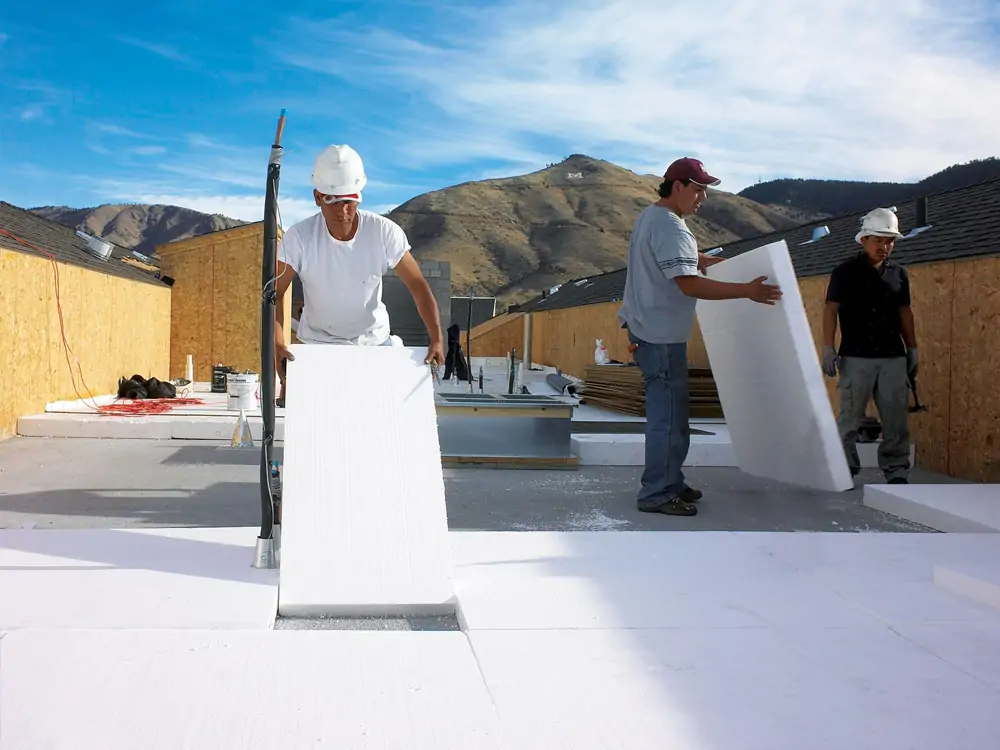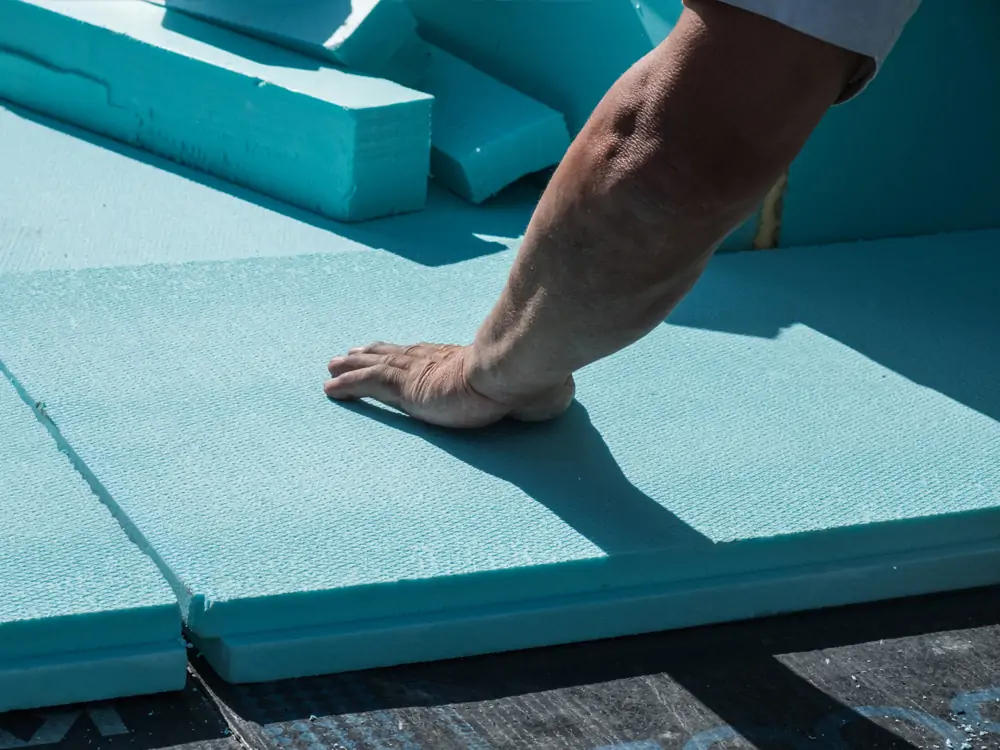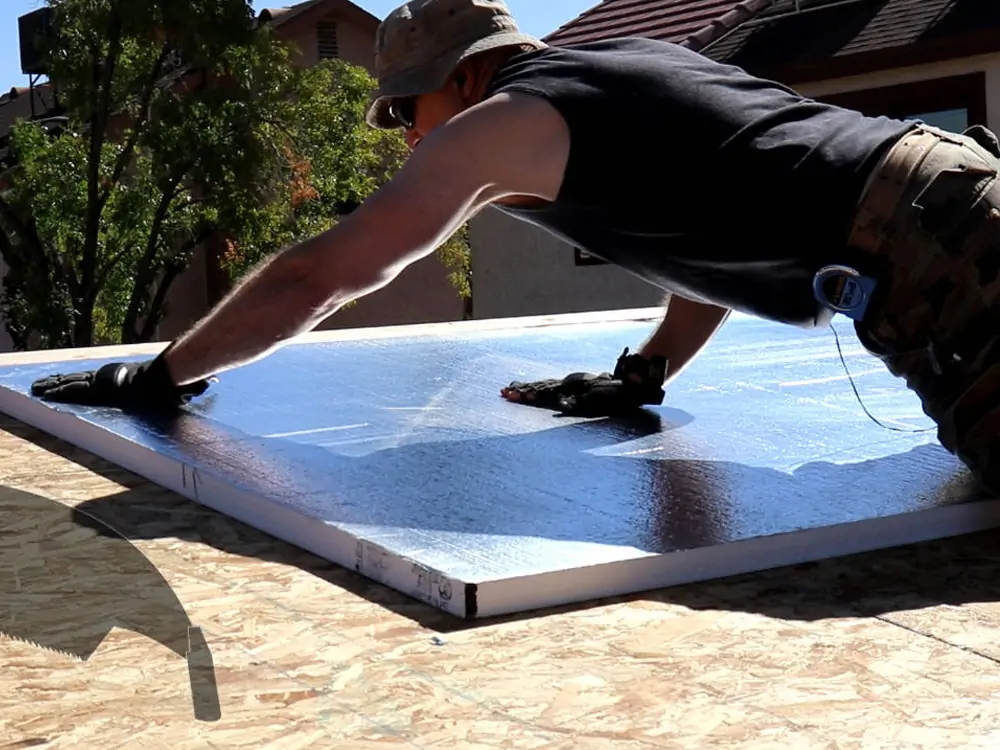Rigid foam insulation is a material called polystyrene, and it is rapidly becoming popular as an insulating material. There are good reasons for the popularity of the material–it is cheap and effective.
There are several different types of rigid foam insulation boards. And understanding the differences between them can help you choose the right material for your project. In this post, we will discuss different types of foam board insulation.

What Is Rigid Foam Insulation?
Rigid foam insulation is made from a synthetic material called polystyrene. It is available as boards that can be conveniently used for thermal and acoustic insulation. In general, it is applied to exterior walls and roofs in order to lower energy costs and make the space more comfortable.
One great advantage of rigid foam insulation is that it stays in place after installation. The material is also resistant to pests and water, making it a perfect insulating material for basements and crawlspaces. The very light weight of rigid insulation is another reason for its popularity.
Types of Rigid Foam Insulation
Various types of rigid foam insulation have their ideal applications. You can get the help of a professional to choose the right material. And if you are a DIY enthusiast, understanding the differences between these types is the key. Let’s dive in.
Expanded Polystyrene (EPS)
Of all types of rigid foam insulation, expanded polystyrene (EPS) is the most budget-friendly. But there’s a catch: its R-value is lower than those of other options. The typical R-value range of EPS is between 3.6 and 4.2 per inch.
If you want to install foam board insulation under roof, EPS is the best option for your project. This soft foam insulation can be used in wall cavities, on rooftops, and in attics. A moisture-resistant film or coating is needed for applications that require exposure to water.

Extruded Polystyrene (XPS)
Extruded polystyrene (XPS) provides better water resistance than expanded polystyrene. A water-resistant foam board works even better than films or coating where moisture resistance is required. If you need a high-density insulation board, you will most likely need an XPS board. While the material is durable and dense, it is slightly more expensive than other options.
Polyisocyanurate (Polyiso, ISO)
Polyisocyanurate is becoming a popular rigid foam insulation, party because it is eco-friendly. On average, the polysio r-value per inch is 6.5, which is pretty high. Depending on the manufacturer, the r-value per inch of polycyanurate can vary a bit. It is remarkably less toxic and even better, it is flame-retardant.
Mineral Wool
Contrary to other types of rigid closed-cell foam insulation, mineral wool is not made from petroleum. Mineral wool is essentially stone dust recycled in a specific way. One of the reasons this foam insulation is a great option for domestic use is that it is non-toxic. It keeps the air quality good, and its R-value does not decline over time. The material is fireproof and very efficient for soundproofing.
However, there are a couple of downsides to mineral wool. It is pricier than fiberglass, and it does not work as an air barrier.

Characteristics of Different Types of Rigid Foam Insulation
| Expanded Polystyrene (EPS) | Extruded Polystyrene (XPS) | Polyisocyanurate | Mineral wool |
|---|---|---|---|
|
|
|
|
Frequently Asked Questions About Rigid Foam Insulation
Why is rigid form insulation used in construction?
There are mainly three reasons why rigid foam insulation is used in construction. They are reduction of energy loss, increasing comfort, and lowering energy costs. When installed under basement slabs, It can also reduce heat loss.
What is the advantage of rigid foam insulation over other types of insulation
The advantages of rigid foam insulation include strength, ease of installation, and resistance to water and pests. You can customize and cut it into unusual shapes due to its amazing versatility. For example, if you need a circular foam board, you can easily cut the board into that shape.
How many types of rigid foam insulation are there, and what are they?
Four types of rigid foam insulation are available on the market. They are expanded polystyrene, extruded polystyrene, polyisocyanurate, and mineral wool. All these types of rigid foam insulation are available as boards.
When discussing rigid foam insulation, people often talk about R-value. What is the R-value, actually?
R-value refers to the measurement of heat flow resistance of an insulation material. The higher the R-value, the better the performance of the insulation material. Factors such as foam type, density, and thickness determine the R-value. It also depends on external factors such as moisture, temperature and aging.
What type of rigid foam insulation is the best option for below-grade applications?
When it comes to below-grade applications, the best insulation option is expanded polystyrene (EPS).
Can you use foam board insulation on the walls?
Yes. Installing foam board insulation on the inside of a wall can prevent your home or office from getting too cold in the winter or too hot in the summer.
What is the most eco-friendly rigid foam insulation?
The most environmentally friendly rigid foam insulation is polyisocyanurate. However, it can absorb moisture, and therefore, you may not want to use it for below-grade applications.
Is there any advantage of mineral wool rigid foam insulation over petroleum-based rigid foam insulation?
Mineral wool rigid foam insulation has two main advantages: it is non-toxic, and its R-value does not decline over time.
Conclusion
Always consider the type of your project when choosing rigid foam insulation. Important considerations include your budget and the space in which you are using the insulation. When installing insulation on the inside of your wall, you can save the floor space by attaching an insulated plasterboard on the wall.
For a DIY enthusiast, understanding the pros and cons of polystyrene insulation is the key. In general, the best rigid foam insulation is the one that has the highest R-value: polyisocyanurate. With that said, the efficiency of rigid foam insulation largely depends on the way you install it. So, make sure you do it correctly.
It’s always good to consult an expert before choosing rigid foam insulation for a project. While there is a lot of useful information out there, an experienced professional can walk you through the whole process.
